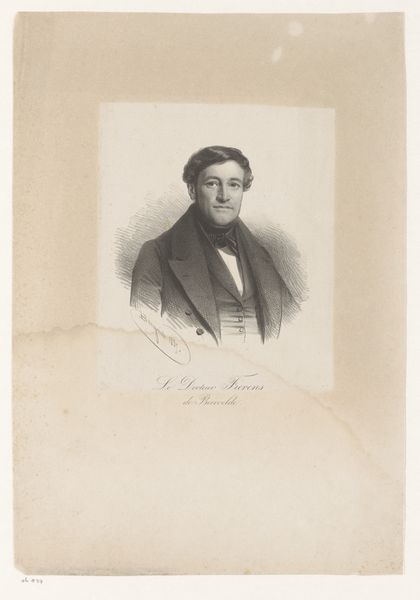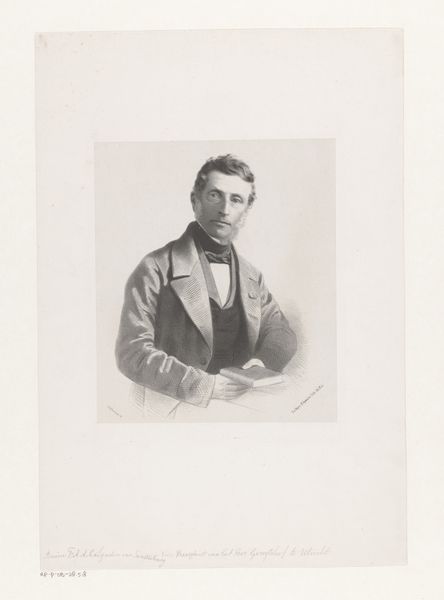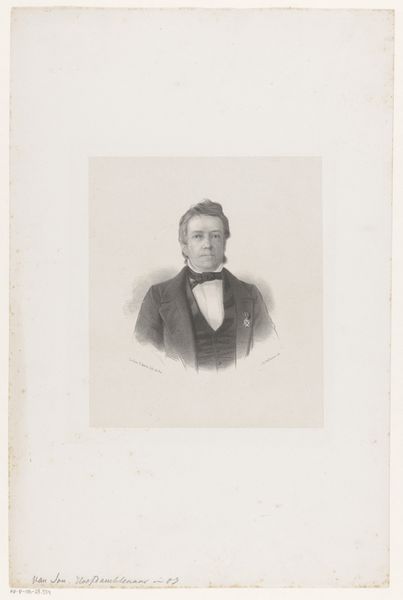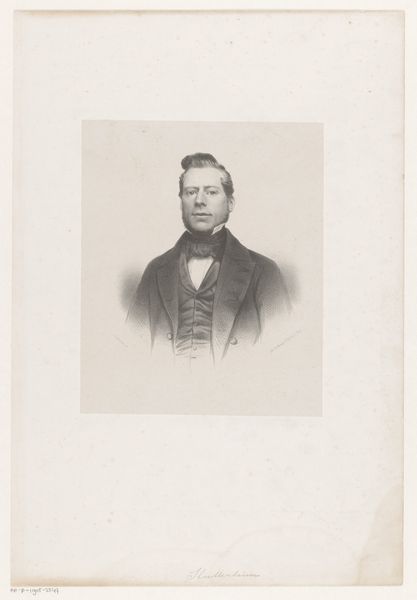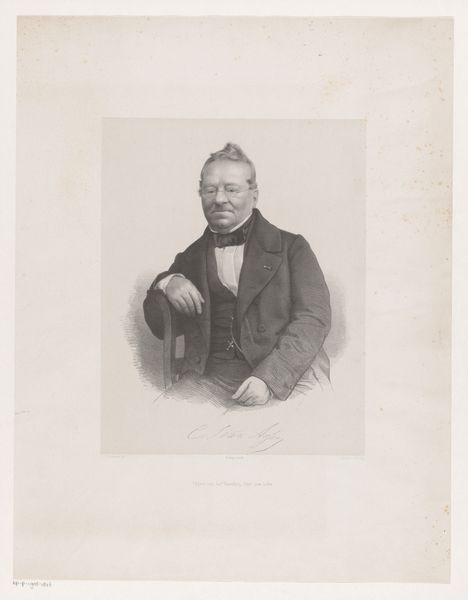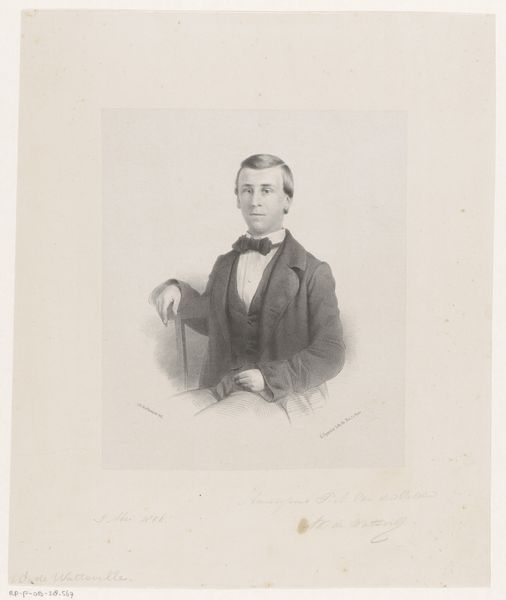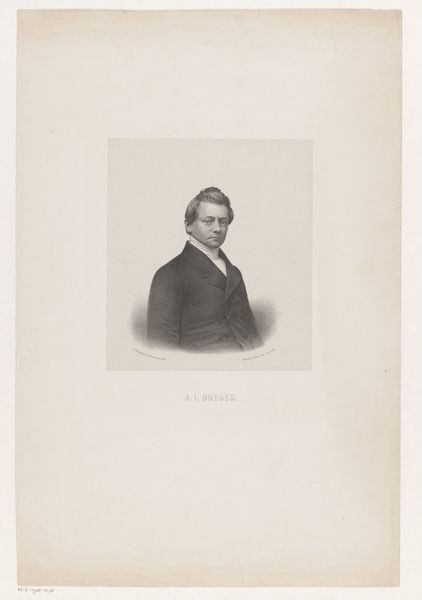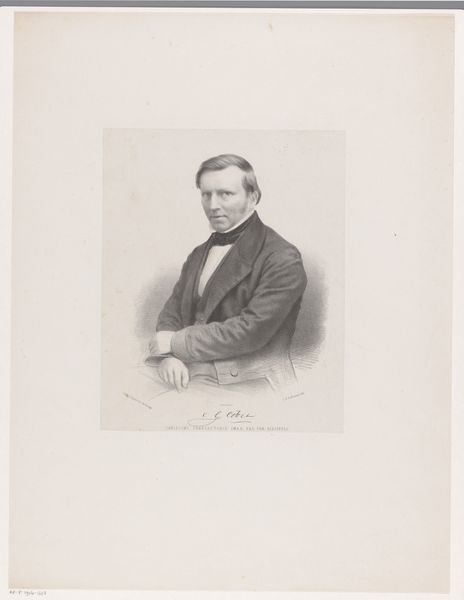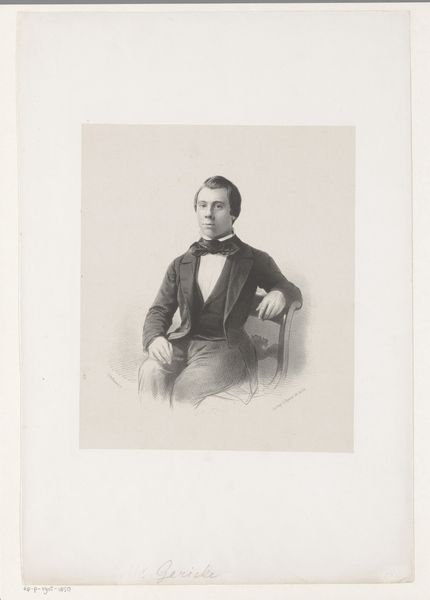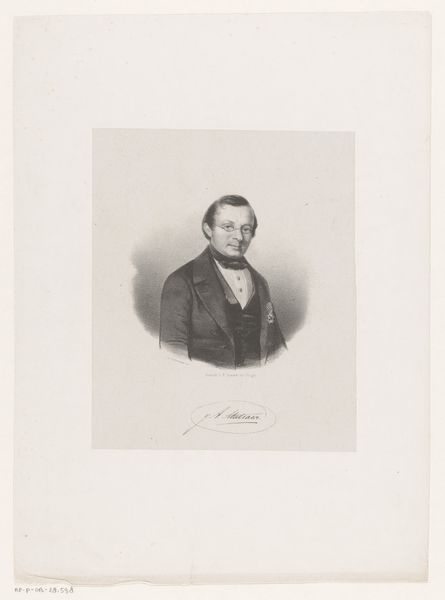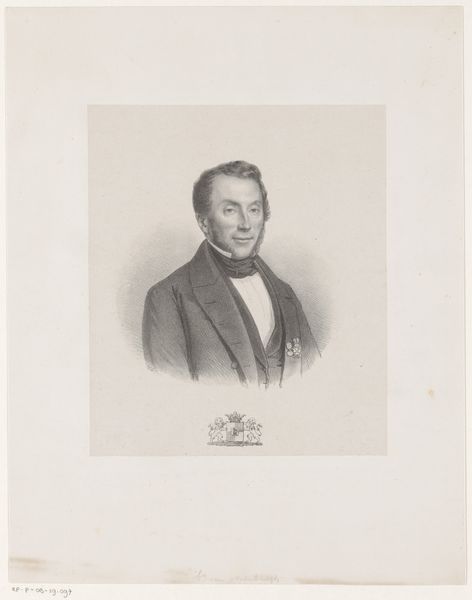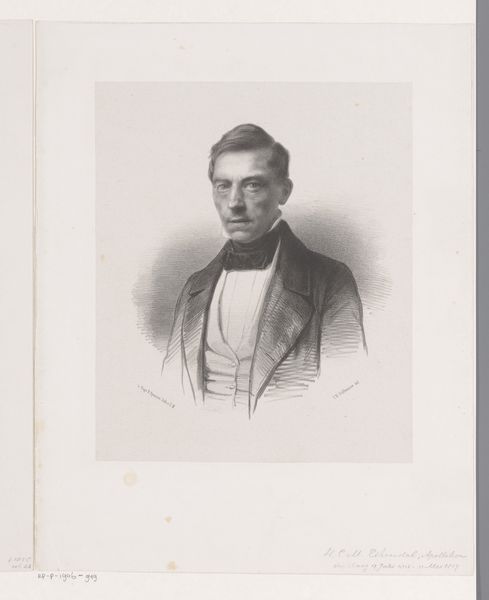
Dimensions: height 302 mm, width 215 mm
Copyright: Rijks Museum: Open Domain
Curator: Here we have Charles Baugniet’s "Portret van Franz Corneli" from 1838, currently held in the Rijksmuseum collection. Editor: My first impression is of someone carefully projecting an air of respectability. The muted tones give a sense of gravity, almost austerity. Curator: Observe the symbolism in the gentleman's attire. The meticulously tied bow tie and the dark jacket hint at societal standing and ambition. The formal clothing serves almost as a uniform, signifying his place within a particular social order. Editor: And let's not forget the physical process of producing this image. Look closely at the subtle cross-hatching, indicating meticulous handiwork involved in engraving or lithography. This reproductive print makes images of figures like Corneli accessible to a wider audience, shaping how the burgeoning middle class viewed itself. Curator: Exactly! Images like this become vessels for encoding and transmitting cultural values, solidifying norms around masculinity, status, and civic duty. Note the careful inscription beneath the image, proclaiming Corneli's membership in the Chambre des Représentants. Editor: How interesting, a relatively accessible method to represent Franz Corneli in that period. It certainly lacks the gilded flourishes of aristocratic portraiture. I am drawn to the absence of extraneous ornament in this image, stripping bare any unnecessary elements of wealth, in what looks like a depiction intended for distribution, of course. Curator: But does that simplicity also lend it a certain degree of symbolic authority, creating an archetype of the 'respectable' citizen? Perhaps it subtly invites viewers to associate their own aspirations with his image, mirroring his ambition in their own lives. Editor: Maybe. Although it may speak more simply about his place of origin in the material sense, offering more immediate methods of representation. Still, these printed images help blur distinctions, and even create commonality where there was disparity, materially. Curator: A convergence of representation then. I'll think of Corneli's portrait now as more than just an individual likeness, but as an artifact reflecting broader currents of Belgian society at the time. Editor: And I'll be reflecting more on how advancements in accessible printmaking like this began democratizing images themselves. Thanks!
Comments
No comments
Be the first to comment and join the conversation on the ultimate creative platform.
